Now, speaking of notches:
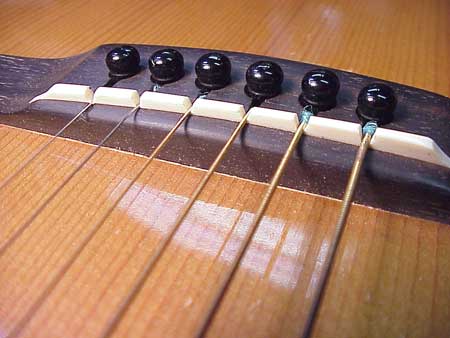
Yep, this is an example of how NOT to lower action. Not only are the strings sitting in deep notches, but they also no longer have sufficient break angle and downward pressure for good tone.
This old timer has no break angle:
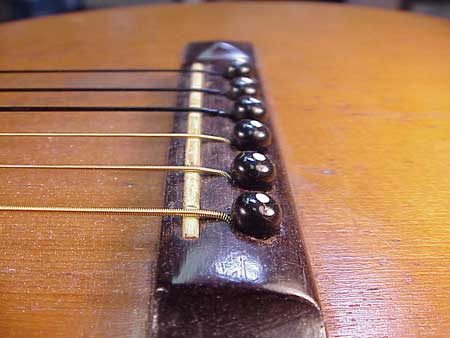
The saddle is so low that the strings barely touch at all. If the saddle needs to be lowered to this extent, the string angle can be restored by cutting little grooves, or "ramps" in the bridge between each bridge pin hole and the saddle. The bridge with the two piece saddle at the top of this article also has very clear string ramps. Even if the saddle is lowered, the strings will have good downward contact.
This saddle sits in a slot that's so shallow there's barely enough bridge strength to support even such a low saddle:

And, here's what can happen to a bridge with a shallow saddle slot and a tall saddle, or, in this case, a slot that's been made effectively shallow by the addition of a too-thick shim or pickup element:
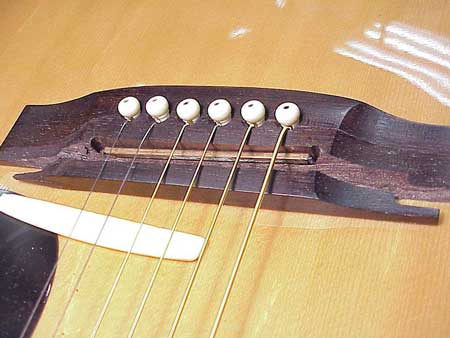
It's possible to design a bridge with the pins too far back from the saddle:
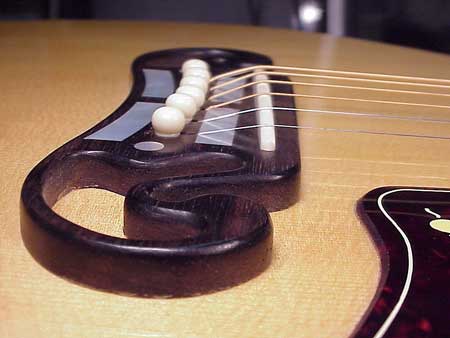
This saddle could not be lowered very far before losing good string down pressure. String ramps would have to be deep and very long, cutting right through the decorative pearl inlay.
Ideally, the very top of the saddle is rounded, so the string "exits" toward the fingerboard, contacting the saddle at a single point. It's easy to visualize the exact shape of the saddle top if you simply lay a straight edge across it:
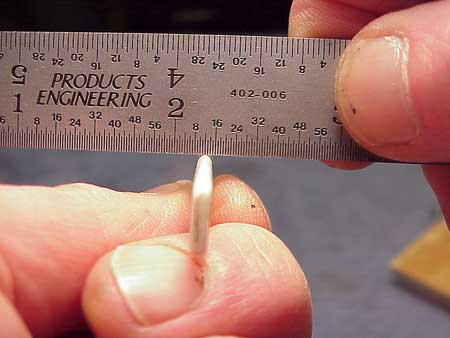
The shadow cast by the ruler highlights the profile of the saddle underneath. Similarly, the string also casts a shadow to make the saddle profile easily seen.
A saddle may be cut so that the top tapers back toward the bridge pins, or even so that it tapers the other way, toward the neck. In any case, the string needs to leave the saddle, bearing on a single point.
This is a flat saddle top:

A saddle this flat on top pretty much guarantees a fuzzy, muddy, or downright buzzy tone.
As you can see, it only takes a second or two to diagnose the most obvious saddle difficulties, if you have an idea of what to look for.